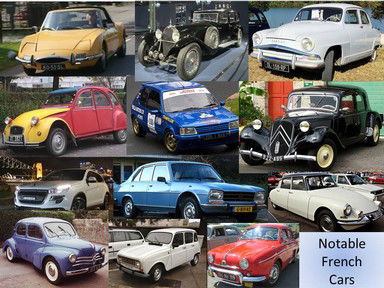
Cars of France Trivia Quiz
The French automobile industry has never been afraid to produce cars different from those manufactured in other countries. As such many automotive innovations were French. Pictured are twelve of the best French cars. All you need to do is classify them.
A classification quiz
by 1nn1.
Estimated time: 3 mins.
- Home
- »
- Quizzes
- »
- World Trivia
- »
- Auto World
- »
- Cars